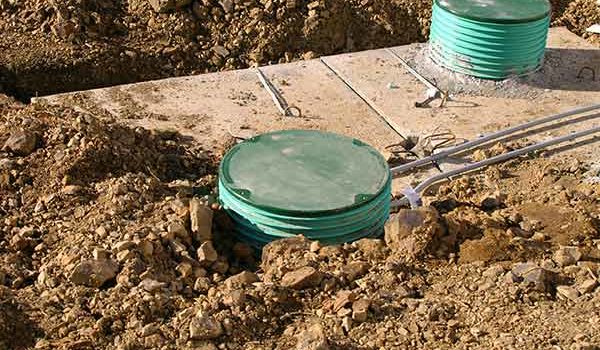As colder temperatures stick around in Northern Alabama, it's natural to think that critical home…

Conventional Septic System Designs and Alternatives
Septic systems play an important role in wastewater management, especially in areas that do not have access to municipal sewer lines. These systems can have either a conventional or an alternative design. Factors such as soil and site conditions determine the type of system you can install.
Read on to learn more about conventional and alternative septic system designs
Conventional Septic Systems
The two types of conventional septic systems are gravity and pressure septic systems.
Gravity Septic System
A gravity septic system comprises of a septic tank, a drainfield, and soil surrounding the drainfield. The septic tank holds wastewater from the building to allow organic solids to sink to the bottom and fat, grease, and oil to float to the top. The pretreated wastewater in the middle flows out of the tank and into the drainfield through gravity.
The drainfield comprises of a network of perforated pipes installed atop absorbent soil. The wastewater drains through the pipes and into the soil for further extraction of bacteria before release into the groundwater system.
Pressure Septic System
A pressure septic system works in the same way as a gravity system. However, a pressure septic system has an additional chamber that houses a pump, which regulates the flow of wastewater into the drainfield to minimize the risk of flooding. Instead of soil, the drainfield in pressure septic systems is installed inside gravel-filled trenches.
Alternative Septic Systems
Alternative septic systems are available in several different styles. The most common ones are aerobic treatment units, mound systems, and sand filter systems.
Aerobic Treatment Units
Aerobic treatment units (ATUs) treat wastewater in the same natural way as a conventional septic system. However, ATUs comprise an aeration chamber in which oxygenated air mixes with wastewater from the building to break down organic matter in the wastewater.
The pretreated wastewater, or effluent, flows into a second chamber where the remaining solids settle at the bottom. The wastewater flows back into the aeration chamber, by either a pump or gravity, for further treatment before release into the drainfield.
The oxygen in this process accelerates the treatment process and leaves the wastewater cleaner. ATUs are suitable for environmentally sensitive areas, such as those close to water bodies where the water table is too high and risks easy contamination.
Mound Systems
Mound systems consist of a septic tank, pump chamber, and a mound that acts as the drainfield. This system works in a similar way to pressure septic tanks, but instead of a flat-lying drainfield the system features a raised drainfield.
Mound systems are best for areas with unsuitable soil conditions and in locations where the groundwater is too close to the table. The mound is made out of a special sand material supported by a bed of gravel.
Inside the mound is a network of small pipes through which wastewater from the pump chamber flows in small doses to allow uniform distribution of effluent across the drainfield bed. The effluent then trickles slowly from the pipes into the gravel and further down into the groundwater.
Sand Filter Systems
A sand filter system consists of a septic tank, pump chamber, sand filter, and drainfield. This system provides high-level wastewater treatment and prevents the contamination of groundwater in environmentally sensitive areas.
Effluent from the septic tank and pump chamber flows into the sand filter for further treatment. The sand filter has a similar construction to a mound but may feature an additional pump chamber that distributes cleaner effluent, in smaller doses, into the drainfield.
Consult with your local department of health to ensure that you install the right type of septic system for your particular location.
At Economy Septic Tank Service we have the experience, expertise, and tools to install standard and alternative septic systems. Call us today for a free consultation or estimate.



